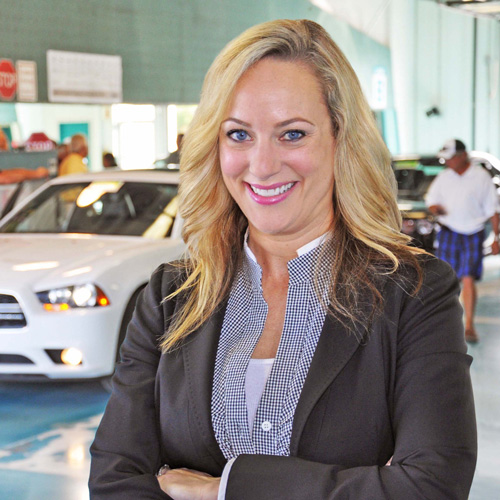If you want to succeed in the technology industry, you need to overcome the market’s noise. New companies pop up every day, while long-standing brands undergo evolutions and reinventions—and they’re all trying to be heard above the din. “It’s a very crowded and tumultuous space right now,” says Dave Treadway, president and CEO of MarketStar Corporation, of the tech sector. And with 25 years of experience in the technology field, Treadway would know. We caught up with the accomplished executive to learn how to best draft a message that can rise above the chaos and connect with any customer, be they consumers, businesses, or both.
1. Technology waits for no man (or company)
Brands that aren’t constantly looking for the next success are likely to fall by the wayside. Where a particular sector may have had only one or two notable players a few years ago, today there could be dozens vying for a share of the same market. “The market is very unforgiving,” Treadway says. It isn’t just competitors that are looking to outpace you—customers, too, want the latest and greatest. What made your brand, product, or service relevant—and what satisfied customers’ needs even a year ago—may now be outdated, and brands that aren’t actively working to set trends often drop into the dull roar of companies that can do nothing but follow the trails blazed by others.
2. Understand the shopper’s journey
Consumers no longer follow the straightforward path from decision to purchase of days gone by; rather, Treadway believes the journey most shoppers take has undergone a fundamental shift. “It used to be more of a linear process to purchase a product,” he says. “Today, we’re seeing a lot of activity going on before people make a purchase decision.” Buyers are augmenting their research with online reviews about products or services they’re considering, as well as recommendations from friends, social networks, and other spheres of influence. Surviving this vetting process often takes a keen understanding of how a specific products fits into the shopper’s basket of needs and expectations, and where shoppers turn for information, specifications,
price-comparison data, and advice.

3. Stay on target
“You need to continually monitor the pulse of your customers, and make sure you’re keeping your interactions with them as relevant as possible,” Treadway says. Brand loyalty may not retain customers the way it used to, so forward-thinking companies should instead focus on creating unique and compelling customer experiences, and maintaining ongoing interactions with customers both existing and potential. “A lot of people’s behavior has shifted with the burgeoning online community, as well as the increasingly competitive landscape,” Treadway adds. The MarketStar team is diligent in examining how the context of the macroeconomic environment affects brands and their products. Using that understanding to craft an appropriate message—one that targets the brand’s specific audience—is crucial. It’s where “a lot of brands are struggling,” Treadway says.
4. Craft a multichannel strategy
“At one point, communication came one way—directly from the brand out to their audiences,” Treadway says. There’s a new normal, and those days, Treadway states emphatically, are gone: “Now it’s multidimensional and it’s nonlinear, meaning that people are taking different avenues to their ultimate purchase decision.” Not only is information being routed and received through nontraditional channels, but the very act of purchasing a product is no longer restricted to the old paradigm. “We’re seeing it with retailers, in terms of how people are showrooming,” Treadway explains. “They often come in to look at products to validate their purchase decision, but go out and buy it elsewhere.” A brand’s message risks being lost if a trip down one of those multiple pathways doesn’t reinforce a customer’s enthusiasm for the product, so ensuring that potential buyers have many opportunities to engage are increasingly important.
5. Create and sustain the customer experience
Showrooming and online purchasing are just two of the recent developments that have changed the way buyers complete their purchases. Treadway describes it as a “before, during, and after” scenario, and says, “It’s important to engage shoppers early on and to find relevant, meaningful ways to get your information in front of them.” If a potential buyer visits a retail establishment to view your product, they need to be able to interact with someone who can give them “good information, relative to how they can use that product or service, and how it will enrich their lives,” Treadway says. Once the buyer has made a decision, maintaining a presence on their radar fills in the gap where brand loyalty once kept customers coming back for more, while also amplifying the brand experience out to their social graph.















